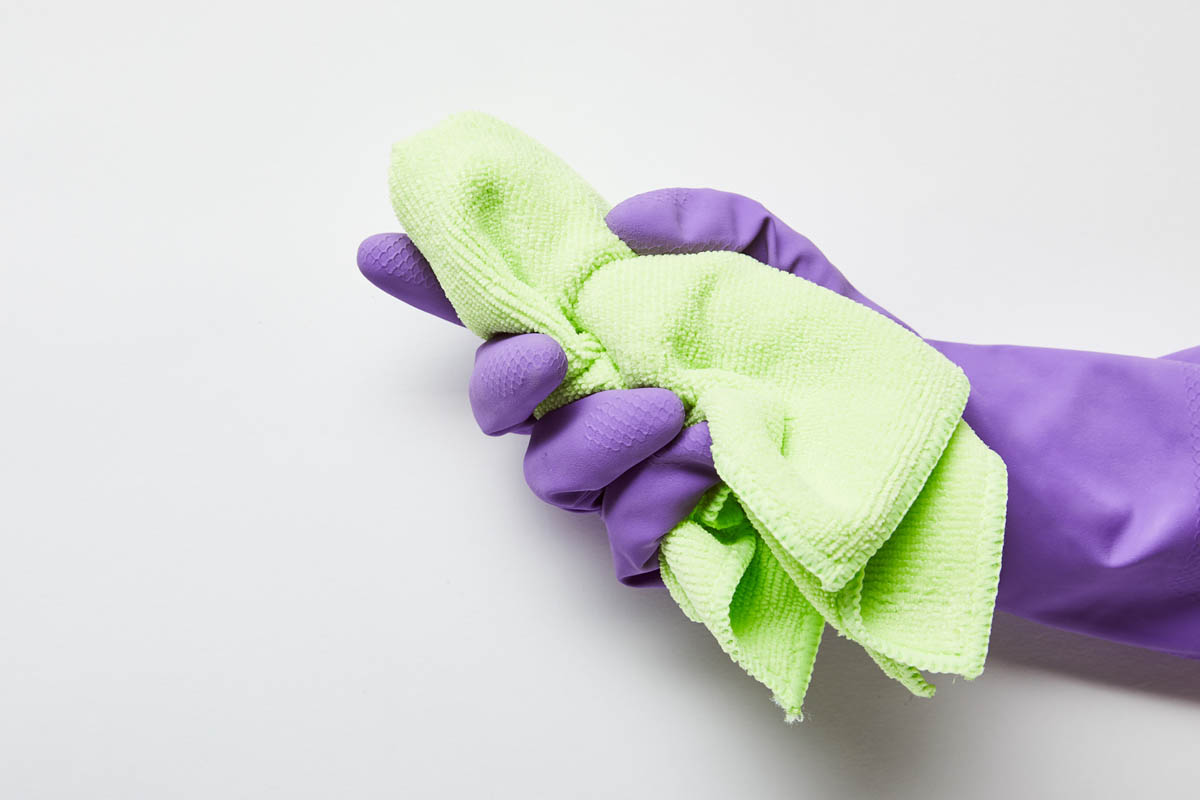
We may earn revenue from the products available on this page and participate in affiliate programs. Learn More ›
With cleaning an ever-pressing priority for us all, how can we better protect ourselves from germs, pollen, dander, dirt and dust? Microfiber cloths may be the answer. These super-soft cleaning cloths are woven from microscopic fibers that attract dirt—and suck up germs and bacteria—thanks to their magnetic charge. Particles get caught in these cloths’ positively charged fibers, helping you keep surfaces inside and outside of your home clean and free of debris—without damaging surfaces or involving any harsh chemicals.
Our guide will give you a complete overview of the benefits and stand-out features to look for when shopping for microfiber cloths. We’ll then review our top picks among the best microfiber cloths available.
- BEST ALL AROUND: AIDEA Microfiber Cleaning Cloths
- RUNNER-UP: Polyte Microfiber Cleaning Towel
- BEST FOR HOUSEKEEPING: E-Cloth Microfiber Home Cleaning
- BEST FOR ELECTRONICS: MagicFiber Microfiber Cleaning Cloths
- BEST FOR VEHICLES: Kirkland Signature Ultra High Pile Premium Microfiber Towels

Why Microfiber?
Medical research shows microfiber to be more effective than traditional cleaning cloths, thanks to its tiny filaments that attract dirt without the need for heavy chemicals. Strong, versatile, and gentle, microfiber’s abilities will make your home safer and more sustainable.
A Better, Healthier Clean
Microfiber’s tiny filaments are incredibly effective at cleaning. Not only can microfiber erase dirt and allergens, but the best microfiber cloths can also pick up surface bacteria and microorganisms. While microfiber cloths can’t kill viruses, they can pick up debris that viruses and germs cling to, decreasing the risk of disease at home, work, and school.
In fact, microfiber cloths are so effective that hospitals are beginning to switch from conventional to microfiber cleaning tools. In one head to head comparison, microfiber mops were shown to reduce germs by 99 percent, while loop mops managed only a 30 percent reduction. In another study, microfiber cloths greatly reduced levels of disease-carrying bacteria like MRSA, E. coli, and C. difficile spores from a range of clinical surfaces.
That said, microfiber cloths are not a replacement for other cleaning methods. In heavily-soiled and germ-prone areas (bathrooms and kitchens), it is still wise to use microfiber only for surface dusting. Keep using soap and water, with a dose of bleach or disinfectant when needed.
Multipurpose and Low Maintenance
Microfiber cloths have a wide range of uses and benefits. These highly absorbent, dirt-attracting cloths are capable of handling both wet and dry messes, and won’t damage most delicate surfaces, including electronics, glass, mirrors, and automotive finishes. Better quality cloths (those with a denser pile and finer strands) are also lint-free, making them excellent for dusting and polishing.
Relatively inexpensive and very durable, use these cloths again and again, following brand instructions for care. In general, once your cloth is dirty, scrub by hand under clean cool water, without soap. Most cloths can also be machine washed but without detergents or bleach. Air-dry or tumble dry on low. Never iron your microfiber as this deteriorates the surface properties that make it such an effective cleaning tool.
Eco-Friendliness
Thanks to their durability, microfiber cloths are highly reusable. Their man-made fibers are non-toxic and require no chemicals to pick up dust and keep surfaces shiny. In fact, microfiber is most effective when used alone or with pure water. With proper care, microfiber cloths can last for hundreds of applications and washes, without shrinking, falling apart, or losing their power.
Key Shopping Considerations
Microfiber may seem magical, but its effectiveness rests on three factors: quality, surface type, and how well you care for it.
Quality
When it comes to microfiber, quality counts and is measured by filament size, fiber density, and weave. Cost and quality often go hand in hand, so pay attention to brand specifications and what other reviewers say about the cloth’s durability and tendency to leave lint behind (a key sign that it’s not good quality). For household cleaning, look for brands that give you specific info about fiber density and whether or not the cloths can pick up germs and other microbes.
- The smaller the fibers, the better the cloth. Look for blends of 80 percent polyester to 20 percent polyamide. Cheaper cloths may have a 90 percent to 10 percent ratio. Most microfiber cloths are composed of filaments that are 10-50 times smaller than a human hair. The highest-quality cloths, however, are made of fibers that are 1/200th the width of a hair. Microfibers can only pick up particles that are larger or the same size as each filament. This means that smaller fibers can suck up dirt, as well as bacteria and even viruses that cling to particulate matter. Microfiber does not kill viruses and germs, but it can pick them up and dispose of them. While most commercial cloths cut down on allergens and are antibacterial, only cloths with the smallest, densest fibers can claim to be anti-viral (and even then, with caveats).
- Microfiber density is measured in GSM (grams per square meter). General use microfiber cloths have a GSM between 200-350. Lower density cloths (200 GSM and less) are more likely to streak glass or leave lint behind. However, due to their rougher surface, low GSM microfiber can be helpful for hardcore and messier cleaning jobs, like removing grease from the stove. Cloths with a GSM of 300-360 are designed for delicate surfaces, including cars, musical instruments, and electronics.
- Weave is also important when choosing a microfiber cloth. Microfibers are chemically split into finer and finer filaments that can be woven in different patterns. A loop weave can whisk away wet and dry messes thanks to microscopic looped “claws.” And these loops are so tiny, most looped-weave microfiber cloths won’t damage even the most delicate electronic surfaces, screens, glass, or mirrors. In contrast, a waffle weave contains larger patterns in the fabric surface, which make these cloths excellent for scouring, scrubbing, and tougher cleaning jobs.
Surface Type
From computer screens and keyboards to phones, eyeglasses, mirrors, furniture, countertops, and more, microfiber cloths can be used to clean almost every home surface. The only note of caution is the quality and weave of the cloth itself. While most microfiber won’t scratch surfaces, lower density cloths with thicker fibers can leave lint behind. They are also less effective at picking up dust, bacteria, and viruses. For delicate surfaces, like electronics, choose a finely-woven, silky smooth cloth, which can glide easily over the surface and clean out tiny crevices. On kitchen and bathroom counters, faucets, and stovetops, a waffle weave microfiber can help remove larger dirt particles, as well as hard water deposits and stains.
Longevity
Microfiber will definitely last longer than many cleaning rags, but how long should you expect your cloths to hold up? The answer depends on two factors. The first is the quality of the cloth itself. Higher-density cloths will typically last longer and maintain their dirt-grabbing abilities despite multiple uses and washes. The second factor is you. If you use microfiber for scrubbing heavily soiled areas, then throw them in the washing machine with detergent, your cloths won’t last as long. But if you follow care instructions, they should last a minimum of several hundred uses and washes.
Our Top Picks
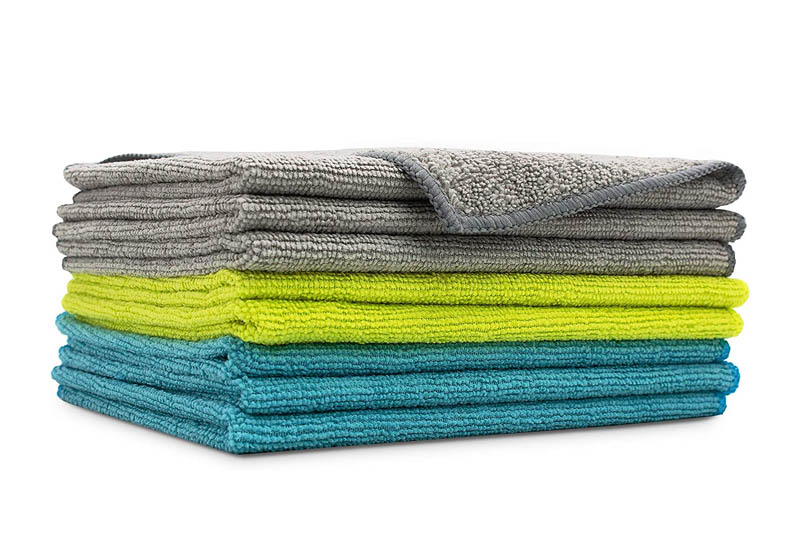
BEST ALL AROUND: AIDEA Microfiber Cleaning Cloths
AIDEA Microfiber Cleaning Cloths are top pick not only because they are super plush and highly absorbent, but also for their sheer versatility. You can use these to capture dust, dirt, and debris on just about every surface imaginable, without worrying about causing damage in the process. Made of non-treated polyester and polyamide fibers, AIDEA Microfiber Cleaning Cloths don’t scratch paint, stainless steel, or electronics—and they won’t fade or deposit lint either.
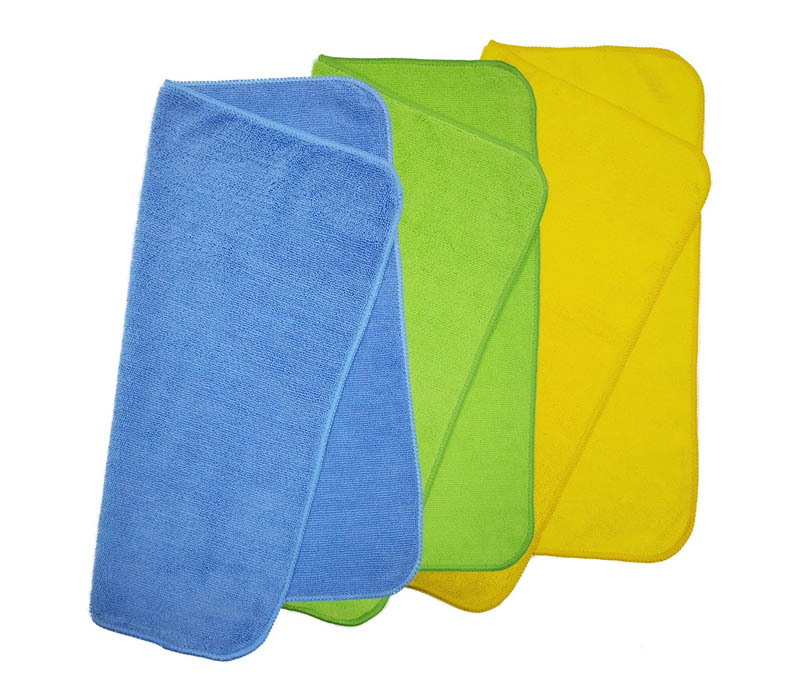
RUNNER-UP: Polyte Microfiber Cleaning Towel
Never be caught without a microfiber cloth again. Polyte’s generous 36-pack includes quick-drying cloths of surprisingly high quality, each with a plush, absorbent weave able to hold up to eight times its weight in liquid. The variety of colors is cheering, but also quite practical, enabling you to prevent cross-contamination by devoting each different color to a different purpose. Suitable for both household and automotive use, Polyte cloths can be machine washed and used hundreds of times before wearing down.
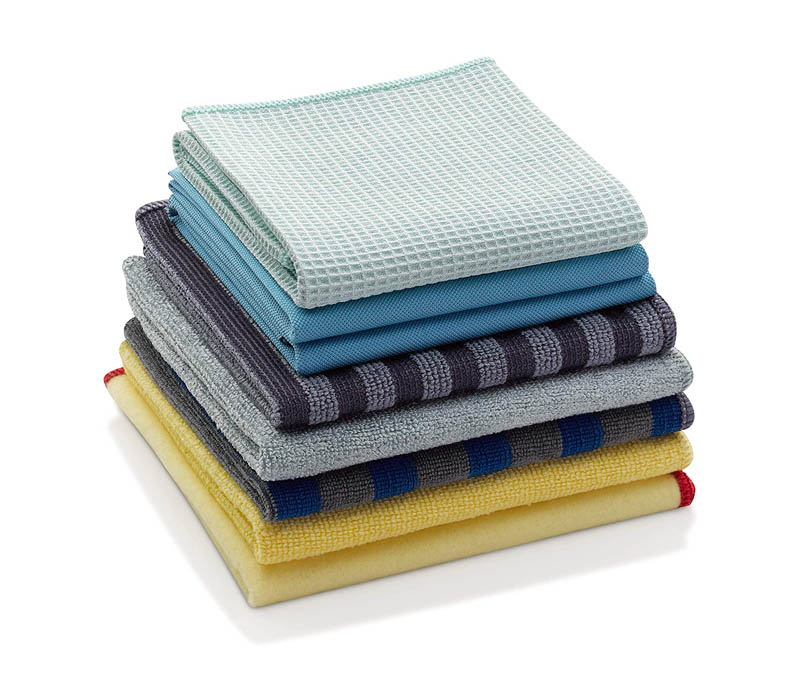
BEST FOR HOUSEKEEPING: E-Cloth Microfiber Home Cleaning
E-Cloth’s premium microfiber cloths are designed for deep cleaning. In fact, the brand claims their cloths can remove over 99 percent of surface bacteria, mold, and pollen, locking contaminants inside the dense fibers until you wash them clean. What we love most is that this eight-piece set can cover a wide range of home cleaning needs: there’s a kitchen cloth with scrubbing pocket, a range and stovetop cloth, two glass polishing cloths, a bathroom cloth, a window cloth, a dusting cloth, and a stainless steel cloth. Each purpose-specific cloth is woven with a subtly different pattern—and comes in a different color—to shine any room and appliance in your home.

BEST FOR ELECTRONICS: MagicFiber Microfiber Cleaning Cloths
MagicFiber’s name says it all. These silky, densely woven cloths are amazingly adept at cleaning electronics, screens, and glass. You can also use MagicFiber cloths as eyeglass cleaners. Indeed, they are good for all delicate surfaces, but most especially computers and smartphones. Keep one in your purse, briefcase, or suitcase at all times! Each pack comes with a protective bag, so your MagicFiber cloths can stay clean and ready for use. Be sure to read the care instructions; these finely-woven cloths should be washed gently and without harsh detergents.
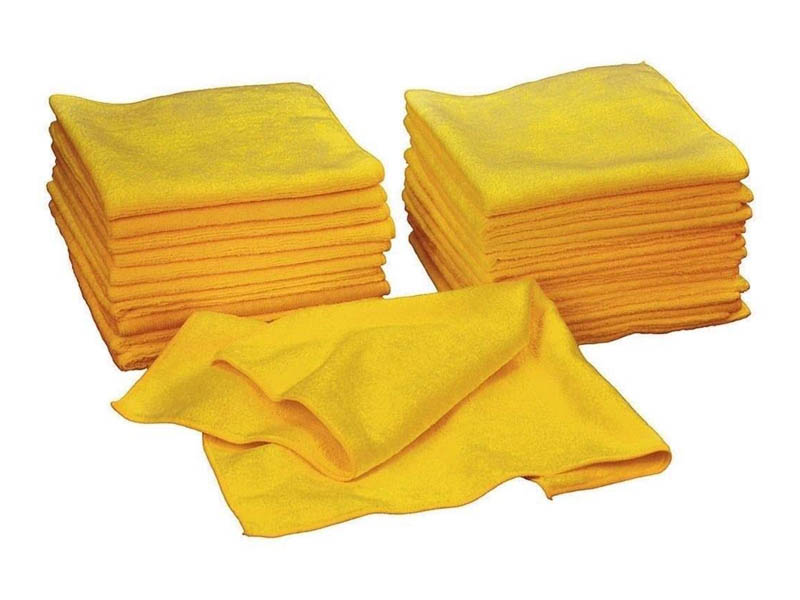
BEST FOR VEHICLES: Kirkland Signature Ultra High Pile Premium Microfiber Towels
With a high fiber density and an affordable price, Kirkland Signature’s premium microfiber towels are best of the bunch when it comes to cleaning cars and trucks. Their thick, plush weave absorbs liquids (including oil) quickly and completely, and they can be used with or without water for a gentle, deep clean. The company claims that their fibers are so tiny they can remove up to 99 percent of surface bacteria. Reuse them with the same results hundreds of times, and care is easy: just machine wash the cloth in cold water (no softener or bleach) and tumble dry on low.
